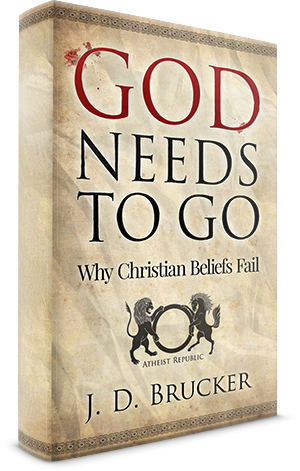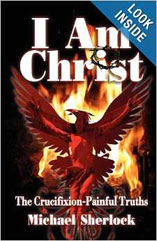
Many people are familiar with the famous, Spanish Inquisition, but less people seem to be aware that there was an even more brutal Christian inquisition, conducted toward the end of the sixteenth century in Goa, India. Regarding this Inquisition, historian J.C. Barreto Miranda, in his Quadros Historicas de Goa, wrote:
The cruelties which in the name of the religion of peace and love this tribunal practiced in Europe, were carried to even greater excesses in India, where the Inquisitors, surrounded by luxuries which could stand comparison with the regal magnificence of the great potentates of Asia, saw with pride the Archbishop as well as the viceroy submitted to their power. Every word of theirs was a sentence of death and at their slightest nod were removed to terror the vast populations spread over the Asiatic regions, whose lives fluctuated in their hands, and who, on the most frivolous pretext could be clapped for all time in the deepest dungeon or strangled or offered as food for the flames of the pyre. (1)
Even fewer people appear to know who initiated and nursed this Christian inquisition, and when I reveal the perpetrator, his name will no doubt ring a most familiar bell. The criminal responsible for the horrendous atrocities committed against the Indians in Goa is held in high esteem by many, and his name has become synonymous with notions of compassion, love and mercy, but not to those who have actually read history.
Before launching into this series of articles, I want to make a brief statement with regards to the methodology I will be employing to justify its contents. The historical sources I will bring to bear on this subject are derived from contemporary accounts, an important luxury for those who seek to write accurate history. But their reliability doesn’t end with mere contemporaneity, because the witnesses I have sequestered to testify against this monster and his profane religion were devout members of that very same religion, thus nullifying any claims to bias, yet another issue that can affect the accuracy of historical testimony.
Goa – 1498
In 1498, the Christian zealot and Portuguese explorer, Vasco Da Gama, reached the shores of India. His arrival was, as history now attests, a portent of unspeakable horror that lurked upon the horizon for the unsuspecting people of both mainland India and Goa. Da Gama’s intentions were made clear from the moment he arrived. India was to cede itself to the Christian king of Portugal and the inhabitants were to convert to his own religion, a religion that on the one hand, spread with foul fruits of toxic egocentrism, narcissism, violence, persecution and intolerance and on the other, teaches us that ‘by their fruits ye shall know them’(Matthew 8:20).
According to the Portuguese Catholic historian, Gaspar Correa, who was living in Goa when Da Gama carried out his brutal campaign there, Da Gama was a monster, dedicated to only two things, Christ and conquest.(2)
Correa chronicled for us a number of the diabolical deeds committed by Da Gama himself and on one occasion, informs us that:
When all the Indians had been thus executed, he (Vasco Da Gama) ordered their feet to be tied together, as they had no hands with which to untie them: and in order that they should not untie them with their teeth, he ordered them to strike upon their teeth with staves, and they knocked them down their throats; and they were thus put on board, heaped up upon the top of each other, mixed up with the blood which streamed from them; and he ordered mats and dry leaves to be spread over them, and the sails to be set for the shore, and the vessel set on fire.(3)
Relaying another of Da Gama’s numerous crimes, Correa reports:
He (Da Gama) then ordered the upper and lower lips of the Brahman to be cut off, so that all his teeth shewed, and he ordered the ears of a dog on board the ship to be cut off, and he had them fastened and sewn with many stitches on the Brahman instead of his, and he sent him in the Indian boat to return to Calicut. (4)
These two horrible felonies were among many other atrocities committed by this son of Christ, as can be further testified to, by two other Catholic historians present during Da Gama’s rampage in Goa.
Barros and Osorio, two Portuguese Catholic historians, record a crime that would churn the stomach of any loving parent and fill the pits of their metaphoric souls with flames of outrage, contempt and mortifying horror. These two faithful historians tell of how Da Gama, after being graciously beseeched by a Brahman to teach Da Gama’s religion to his own two sons and his nephew; hung the three children, who had remained on board as hostages, to his yardarms, and passed before the town with them suspended, and then sent their bodies on shore. (5)
What kind of psychopathy would lead a person to commit such a vile and horrendous act? I think Voltaire may have touched upon the answer to this question when he said, “Those who can make you believe absurdities, can make you commit atrocities.” Now, I am almost certain that the Christian reading this little article has already reached for their ‘no true Scotsman fallacy,’ in order to stave off the dissonance of belonging to a religion that has plagued the earth with such rotten and fermented fruits, but the truth is, this small piece, as incomplete and poorly written as it may well be, is but a microcosm of the majority of the history of that religion which has preached tolerance, yet practiced one of the most potent and profane forms of persecution.
If only I could stop here and conclude that we have no more to report with regards to the fate of those poor people of Goa, but alas, I have only begun. In the next part in this three part series of articles, I will detail some of the crimes committed by our as yet, unnamed psychopathic saint.
To be continued…
Sources
- J C Barreto Miranda. Quadros Historicas de Goa. Margoa (1864). p. 145.
- Gaspar Correa. The Three Voyages of Vasco De Gama. Burt Franklin. (1869). p. 96.
- Ibid. pp. 331-332.
- Ibid. p. 363.
- Ibid. p. 364.
Photo Credits: Ernesto Casanova: Vasco da Gama standing in prow of rowboat































